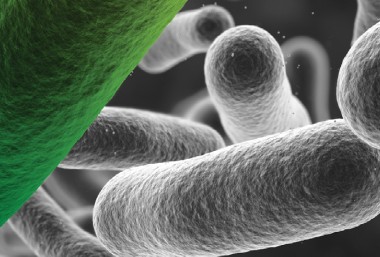This week the High Court of Australia released its decision in Apotex Pty Ltd v Sanofi-Aventis Australia Pty Ltd. The key issue under consideration was whether methods of medical treatment were patentable subject matter. Surprisingly, this issue had not been considered by Australia's top court until now.
Summary
The High Court split 4-1 over the issue, but the majority confirmed that methods of medical treatment of humans can be patentable inventions. Assuming that all other requirements for patentability are met, a method (or process) for medical treatment of the human body which is capable of satisfying the NRDC Case test, namely that it is a contribution to a useful art having economic utility, can be a manner of manufacture. Such treatments can therefore be patentable inventions within the meaning of section 18(1)(a) of the 1990 Patents Act.
The court also held that Apotex had not infringed Sanofi-Aventis' patent by supplying a generic product that could be used in the patented method, when Apotex's product information expressly excluded using the generic product for the patented purpose.
Background
Sanofi-Aventis owned the patent under dispute. The only claim of this patent was directed to a method of preventing or treating psoriasis by administering a composition containing Leflunomide. Leflunomide was a known compound, but its use to treat psoriasis was new.
During the term of the patent, Apotex indicated its intention to supply generic Apo-Leflunomide in Australia as a treatment for psoriatic arthritis (PSA) and rheumatoid arthritis (RA). Apotex's approved product information document listed on the Australian Register of Therapeutic Goods (ARTG) indicated Apo-Leflunomide for PSA and RA but stated it 'is not indicated for the treatment of psoriasis that is not associated with manifestations of arthritic disease'.
A patient with PSA would almost always have or develop psoriasis. Therefore, if Leflunomide was prescribed to a patient with PSA, the drug would also prevent or treat psoriasis.
Sanofi-Aventis initiated proceedings against Apotex, alleging that Apotex's proposed supply of generic Leflunomide would infringe its patent. In response, Apotex cross-claimed for revocation of the patent on several grounds.
The lower courts rejected all of Apotex's revocation arguments, and found that supplying generic Leflunomide would be an infringement of Sanofi-Aventis's patent. Apotex appealed to the High Court in relation to both the revocation action and the infringement action.
Patentability of method claims
In relation to the revocation action, the only question before the court was whether methods of medical treatment of human beings were patentable subject matter.
Section 18(1)(a) of the Australian Patents Act 1990 requires that an invention is 'a manner of manufacture within the meaning of section 6 of the Statute of Monopolies'. The notion of a 'manner of manufacture' is one that had evolved as result of a series of court cases into something much broader than the words alone would suggest. In particular, methods of medical treatment had been allowed by the Australian Patent Office for many years. This position was supported by several Federal Court decisions. However, a degree of uncertainty remained because of passing comments made by the court in several cases over the years. Apotex submitted that these comments showed that methods of medical treatment were not patentable subject matter.
Apotex also relied on the fact that other countries, such as New Zealand and the UK, use the Statute of Monopolies as the foundation of their patent systems but don't permit claims to methods of medical treatment.
For the court to accept Apotex's argument, they would have to accept that there was a special exclusion from the concept of patentability for methods of human treatment. However, the court found that there was no basis for this kind of exception. In fact, the court considered that the exclusion of methods represented an anomaly for which no clear and consistent foundation had been enunciated. Whatever the views of the past, methods of treatment could not be conceived as 'essentially non-economic'.
The Justices reviewed the history of the exclusion of medical treatments from patentability. They concluded that the earlier case law did not disclose a stable or logical reason for any exclusion. Rather, the exclusion of methods of medical treatment seemed to depend upon 'rather nice distinctions' for its maintenance. In particular, the court considered that there was no way to distinguish therapeutic product claims from method claims on ethical or economic grounds. In each case the subject matter in respect of which a monopoly is sought effects an artificially created improvement in human health, having economic utility. It could not be said that a product claim which includes a therapeutic use has an economic utility which a method or process claim for a therapeutic use does not have. There are also problems associated with the previous practice of differentiating between 'cosmetic' methods and 'therapeutic' methods. For example, a method for losing weight could be both cosmetic and provide health benefits.
The court acknowledged that there may be tension between incentivising health innovation and making the widest possible range of treatments available. However, that tension is for legislature to resolve. It should be noted that Apotex expressly disclaimed any reliance upon the 'generally inconvenient' proviso of section 6 of the Statute of Monopolies when it brought its appeal.
Surgical methods
The issue before the court was whether a method of medical treatment which involves a previously unknown therapeutic use of a pharmaceutical was patentable. The Justices commented that the activities or procedures of doctors and other medical staff when physically treating patients could be a separate issue. It was unnecessary for the court to decide whether such activities were patentable. However, there were suggestions that this type of method was essentially non-economic and unlikely to satisfy the NRDC test for the patentability of processes. This was because such processes are not capable of being practically applied in commerce or industry. The question of whether surgical methods are patentable therefore remains open.
Infringement
In relation to infringement, the court had to consider whether Apotex directly or indirectly infringed Sanofi-Aventis's patent, notwithstanding that using Apotex's generic Leflunomide inevitably resulted in the treatment of the claimed indication, ie, psoriasis.
The approved product information document for Apotex's generic Leflunomide was limited to indications for treating active RA and active PSA. The product information expressly said that Apotex's generic Leflunomide was not indicated for treating psoriasis. But the inevitable result of treating PSA is to treat psoriasis and the lower courts had found direct or indirect infringement.
The High Court held there was no patent infringement. The claim could not be directly infringed by the use of Apotex's generic Leflunomide to treat PSA.
Further, there was no indirect infringement because:
-
The product information does not include the use of Apotex's generic Leflunomide to treat psoriasis. There was an emphatic instruction to restrict the use of Apotex's generic Leflunomide to uses other than treating psoriasis.
-
It could not be inferred that Apotex had reason to believe that their generic Leflunomide would be used to treat psoriasis. That was contrary to the indication in the approved product information document.
Accordingly, even if it is almost inevitable that in fact a medicine will be used to treat a claimed indication, if the alleged infringer positively directs against that use it will be difficult to prove inducement or other indirect infringement.






